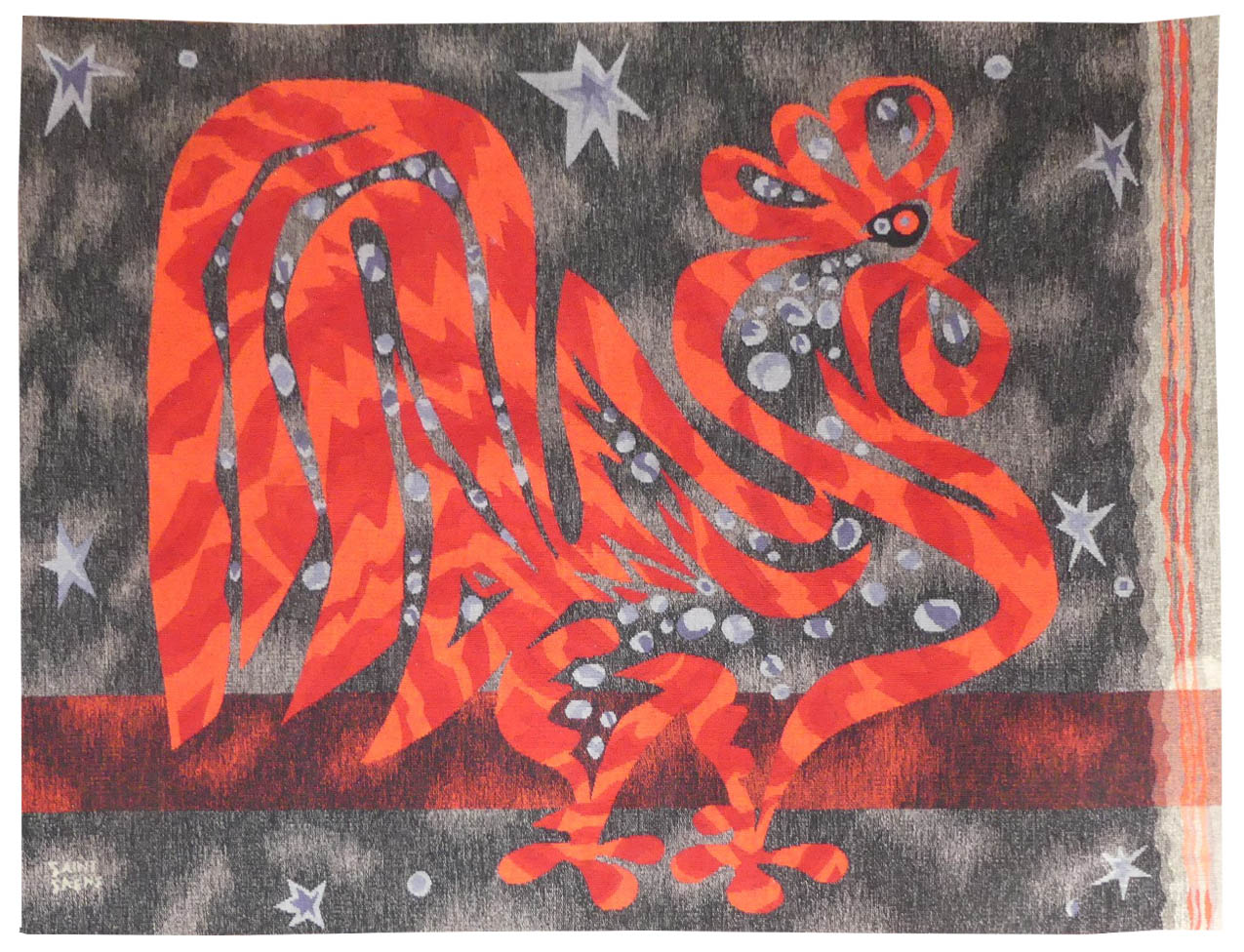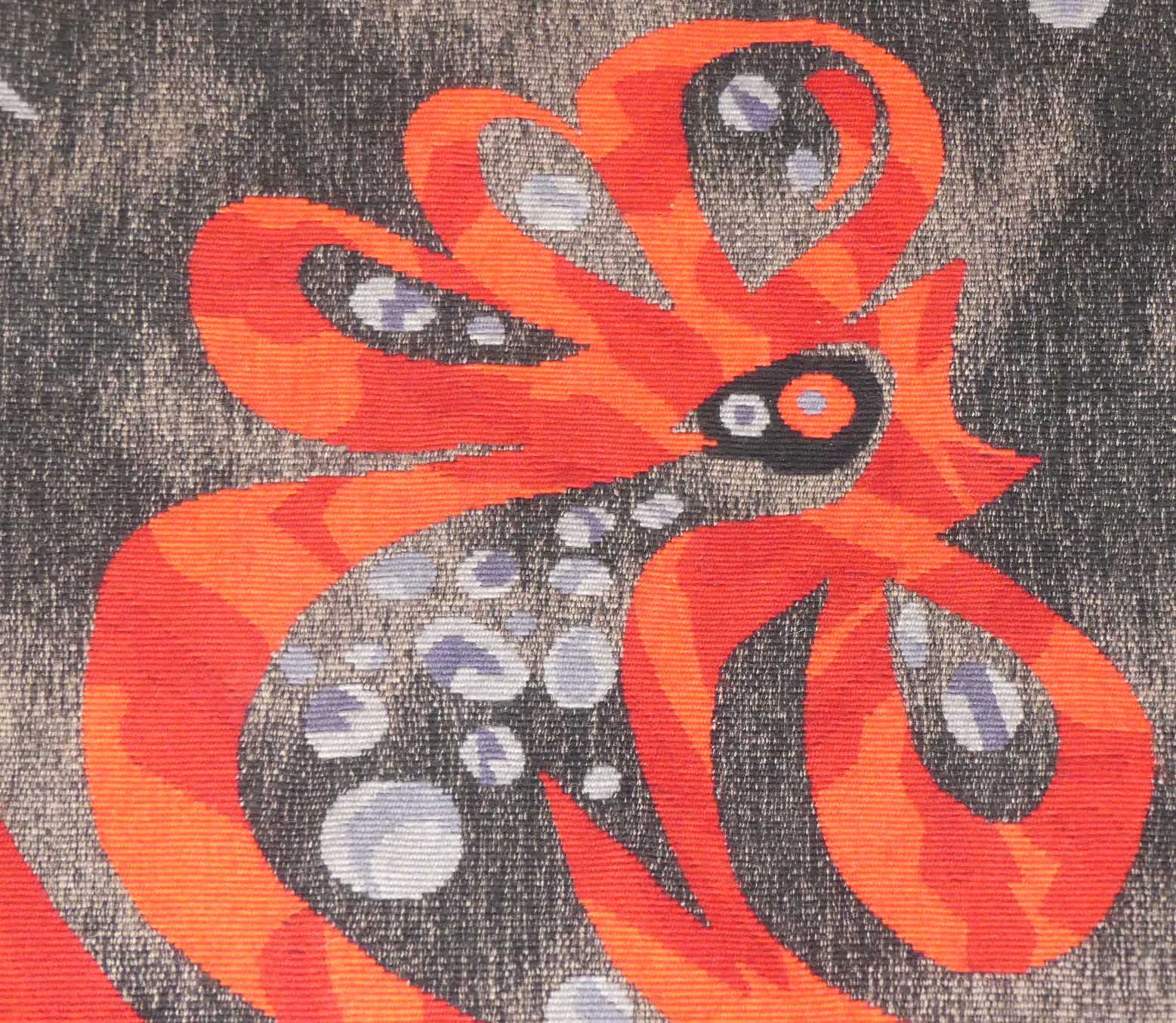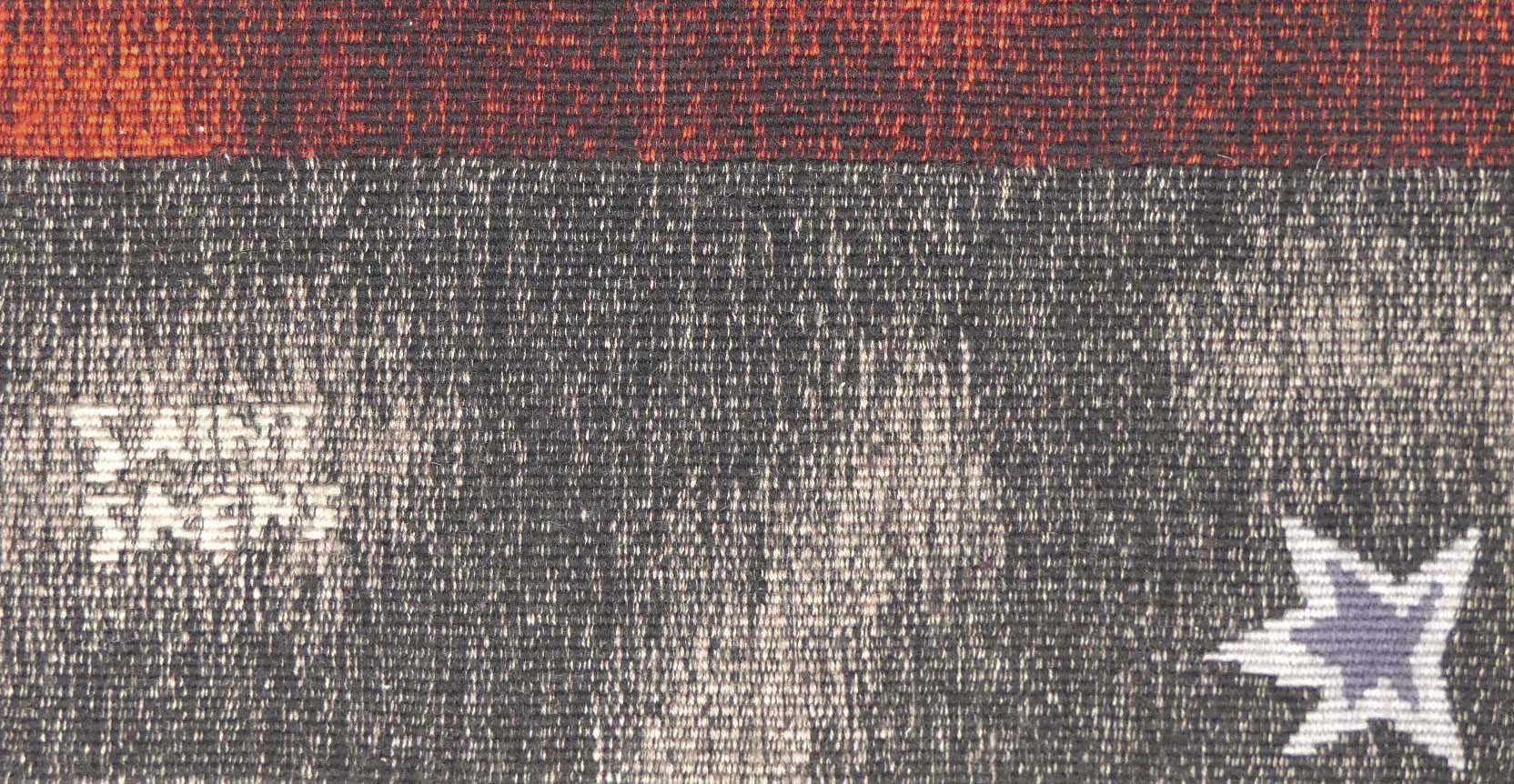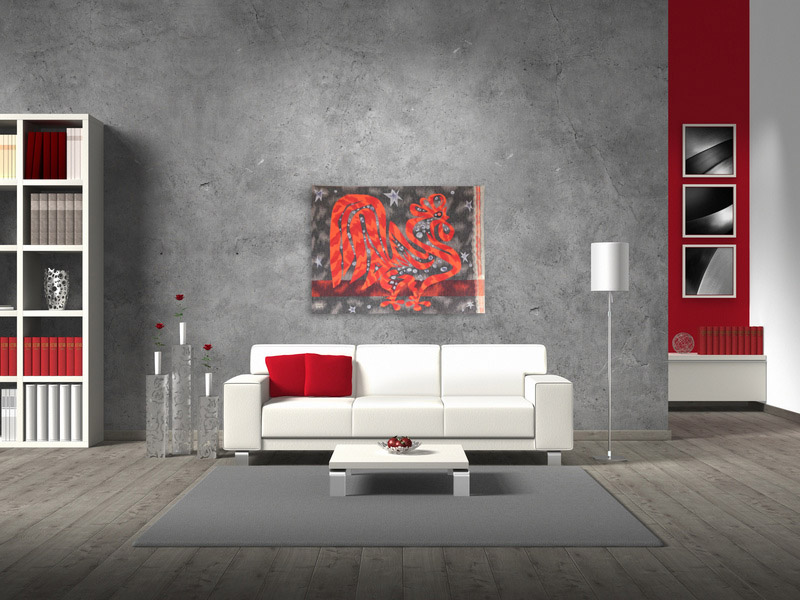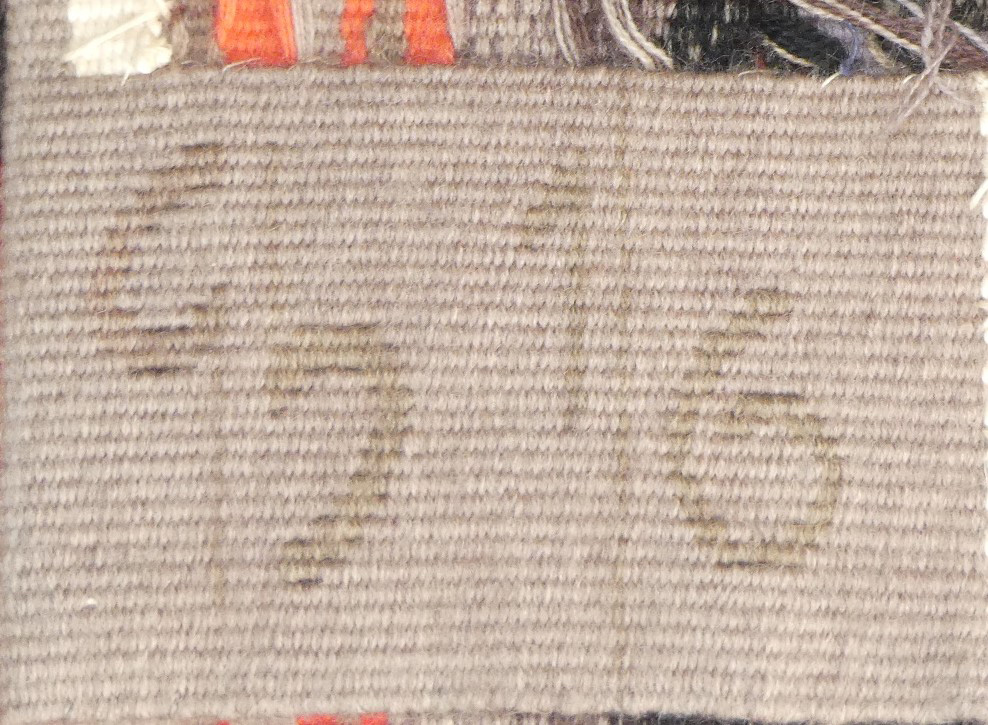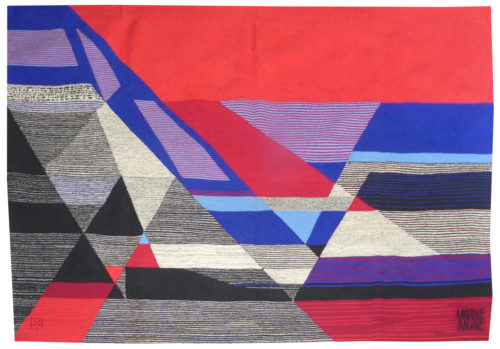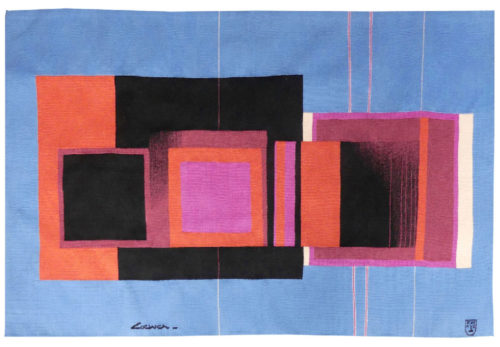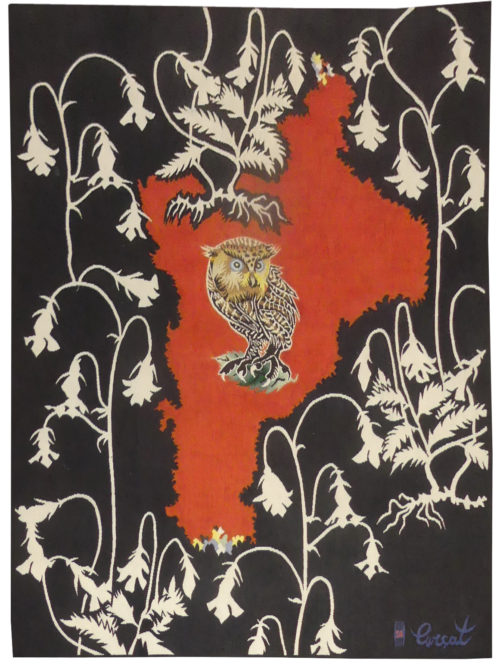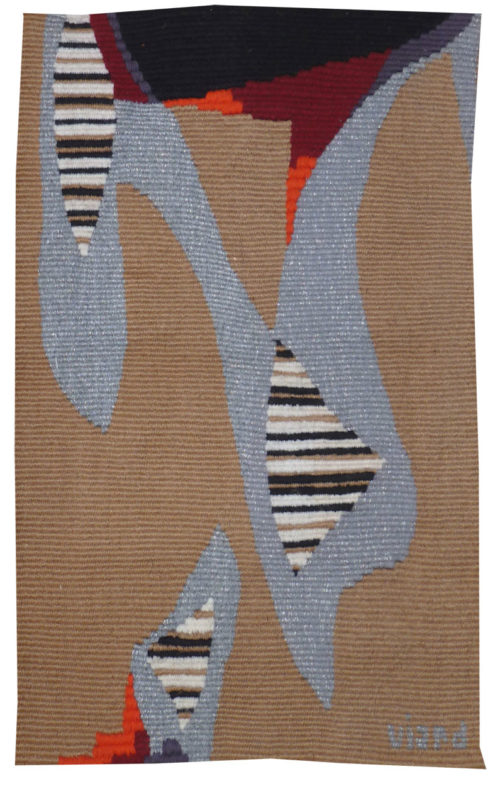Coq rouge (red rooster)
Aubusson tapestry woven by the Glaudin-Brivet workshop.
n°1/6.
1974.
Lurçat approached Saint-Saëns, originally a painter of murals, in 1940. And during the war the latter produced the first of his allegorical masterpieces,
tapestries reflecting indignation, combat, resistance : “les Vierges folles (the foolish virgins), “Thésée et le Minotaure” (Theseus and the Minotaur). At the end of the war, as a natural development he joined up with Lurçat, whose convictions he shared (concerning a simplified palette, outlined cartoons with colours indicated by pre-ordained numbers, and the specific nature of tapestry design…) at the A.P.C.T. (Association des Peintres-cartonniers de Tapisserie). His universe, where the human figure, stretched, elongated, ooccupies an important place (particularly when compared to his companions Lurçat or Picart le Doux), pivots around traditional themes : woman, the Commedia dell’arte, Greek mythology… refined by the brilliance of the colours and the simplification of the layout. His work would evolve later, in the 1960’s, towards cartoons of a more lyrical design, almost abstract where elemental and cosmic forces would dominate.
The theme of the cockerel, already present in « réveille-matin » (the alarm clock) in 1959, is something of a rarity in Saint-Saëns’s work (notably when compared with that of Lurçat). In this case the style has much evolved : the forms are supple and sinuous, the colours vivid, the lines uncluttered as if drawn in (red) chalk on a blackboard.
Bibliography :
Exhibition catalogue Saint-Saëns, oeuvre tissé, Aubusson, Musée départemental de la Tapisserie, 1987
Exhibition catalogue Marc Saint-Saëns, tapisseries, 1935-1979, Angers, Musée Jean Lurçat et de la Tapisserie Contemporaine, 1997-1998, ill. p.22


